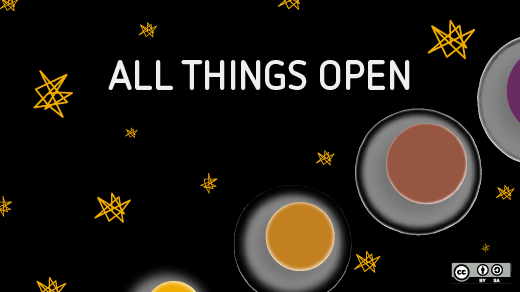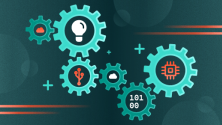One of my favorite things about the keynotes at All Things Open this year was that attendees didn't have just one great speaker to listen to each morning—we had a few. I enjoyed hearing multiple stories and many insights from dynamic speakers all in one sitting.
This article is a summary of two keynotes:
- Mark Skarpness, Director of Embedded Software, Open Source Technology Center at Intel
- Isabel Jiminez, Distributed Systems Engineer, Mesosphere
Mark spoke about one of my new passions, the Internet of Things, and Isabel spoke about my all-time favorite passion, contributing to open source communities and getting paid to do so.
The challenges of making IoT real
Mark Skarpness told us that he believes that the Internet of Things (IoT) has the potential to change the world in profound and meaningful ways. Maybe our smart refrigerators and kitchen appliances aren't going to change the world, but there are many examples that do have an amazing potential.
With this new technology comes new challenges. The first challenge is all of the new developers who aren't embedded systems experts. We need to bridge the gap between these great ideas and the technology behind IoT. There are also a new set of requirements. Security is number one, of course. There are a lot of examples out there of IoT devices that have been hacked, and we need to do more to help developers build truly secure devices. If these devices are going to be controlling our personal information, our roads, our infrastructures, then we need them to 100% secure or IoT will never succeed.
Vaccines are an example of a complex issue that society needs to think about managing, said Mark. One challenge is that vaccines need to be kept at a specific temperature to be viable. Mark talked about sensors that can be put on vaccine viles to know if the medication was kept at the right temperature in transit and to know if the vaccine is viable when it arrives where it is needed country. This is especially helpful in developing countries.
Mark advises developers to take an existing open source solution and build it in to a device that does what you want it to. Or, start from scratch. But learn how to be an embedded systems specialist to be able to create and create well in the world of IoT.
Key features to developing IoT are:
- Customization
- Connectivity
- Security
- Device Management
The most important of these is security. Mark said, you need to start with a secure foundation, and you have to be able to update it on a regular basis because no one can build a perfect system right out of the gate. For example, the vaccine sensors are historically built without a way to upgrade them because they were cheap, and people just threw them out and built new ones. Imagine if you're embedding sensors into the walls in your house or in your roads; you can't take those out and replace them, you have to be able to update them.
Mark said, we cannot just build one software stack and deliver that. It's not like cell phones; the diversity in devices is way too wide. We need to provide the tools needed for customization, not low level tools, but tools that are taken up a level. We also need to enable devices to talk to each other securely across vendors. If you buy your lightbulb from one vendor and your thermostat from another, they might not be able to speak to each other. In short, then, we have to have standards and we have to certifications to ensure that these devices can talk to each other.
Mark invites us all, to work together to help embedded developers and new requirements to create a brillant IoT world.
Contributing to open source fulltime
Isabel Jiminez got started with open source in high school by installing Linux and writing small shell scripts. She had a goal to participate in open source and, in her keynote, urged us to reach for our goals even if we fail. At the time, she had a problem that many other students have today: How do I get a job without experience? And, how do I get experience without a job? And, she (like me) realized that open source is a window of opportunity.
What companies want to see is your code, and how better to achieve that than to show them your contributions to open code?
Isabel joined the Docker community because it felt safe and open, and quickly realized that the bar we set in our open source communities for contributing is very high, which can lead to good products as well as a good environment for young contributors to learn how to code better with every accepted patch. She also took advantage of programs like Google Summer of Code and Outreachy to get involved and gain experience.
While in school, Isabel's contributions to open source helped her gain experience that she could put on her resume. Once she graduated, she realized that she still wanted to contribute to open source. That lead her to Mesosphere, where she gets to contribute fulltime for a paycheck.
The key takeway for me listening to this talk was that we need to get more opportunities out there for our students to participate in open source. If we get them excited they may be with us for a while!
series
This article is part of the All Things Open Speaker series. All Things Open is a conference exploring open source, open tech, and the open web in the enterprise.







Comments are closed.